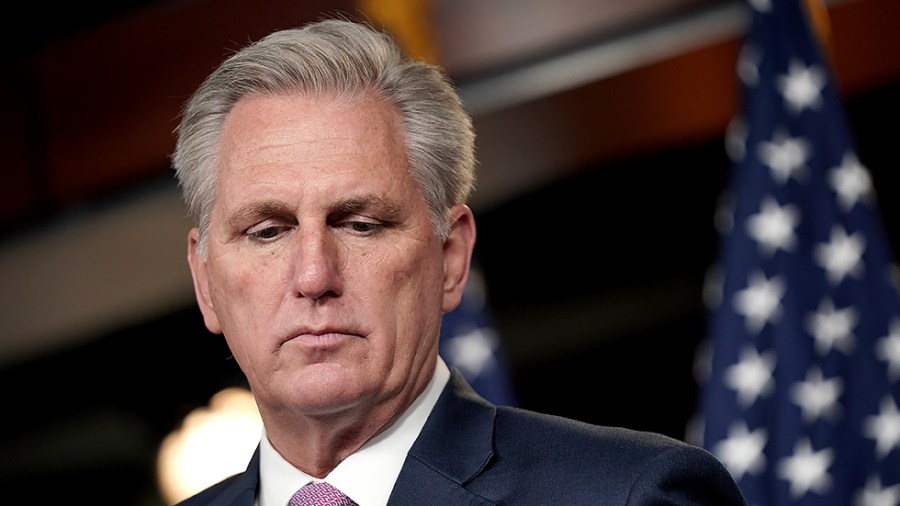When the insurrectionists invaded the office of House Minority Leader Kevin McCarthy (R-Calif.) on Jan. 6 as he was hustled out into a “secure location,” they could not help but notice a large visage of Ronald Reagan displayed prominently in McCarthy’s inner sanctum. Like many Republicans, McCarthy deeply admires Reagan who cast a spell on the Republican party that lingers to this day. Decades after Reagan won the presidency in 1980 and died in 2004, Republicans often asked themselves the question, “What would Reagan do?”
In 1978, Ronald Reagan himself had to answer that question. That year, the culture wars were just beginning. In Florida, singer Anita Bryant began an anti-gay crusade after passage of a local ordinance that outlawed discrimination against gays in employment, housing, and public accommodations. The backlash was swift. In California, as outlined in Rick Perlstein’s “Reaganland: America’s Right Turn 1976-1980,” an obscure Republican state legislator named John Briggs introduced “a right-to-discriminate” initiative that gave local school boards the power “to refuse to hire as an employee any person who has engaged in public homosexual conduct. ” This included “advocating, soliciting, imposing, encouraging, or promoting private or public homosexual activity directed at, or likely to come to the attention of school children and or other employees.” “Normal people,” said Briggs in the book, “have a right to be heard.”
The measure quickly gained 500,000 signatures, more than enough to place it on the November ballot. At the start of the campaign, polls showed the Briggs Initiative leading 61 percent to 33 percent. This was in line with other national polls. In 1978, 66 percent opposed having homosexual teachers work in their public schools, and 59 percent believed homosexual relationships between consenting adults were “not acceptable at all.” Harvey Milk, then a San Francisco supervisor urged gay citizens to publicly out themselves to build support for the measure. But per “Reaganland,” the president of Milk’s political organization saw the writing on the wall: “We’re going to get creamed and it’s important that we not deceive people into thinking we can win.” Emboldened, Briggs escalated his attacks, noting that should one gay teacher be allowed to stay “soon there’ll be two, then four, then eight, then twenty-five.” The Religious Right came out strongly for Briggs. Jerry Falwell sent letters to hundreds of California churches urging them to vote for the amendment, warning that failure would “bring the wrath of God down upon our nation.”
1978 was an important year for Reagan. Having experienced a narrow loss to Gerald Ford at the Republican National Convention just two years before, Reagan was beginning to embark on another quest for the presidency. Evangelicals were beginning their journey into the Republican party, and Reagan was actively courting religious leaders like Falwell who, in 1979, would form the Moral Majority. But in 1978, Reagan took an enormous political risk by coming out strongly against the Briggs Initiative. In a powerful statement, the former California governor denounced the measure saying, “[I]t has the potential of infringing on the basic rights of privacy and even constitutional rights.” Reagan noted the “undue harm” it could cause, adding: “Whatever it is, homosexuality is not a disease like the measles. Prevailing scientific opinion is that an individual’s sexuality is determined at a very early age and that a child’s teachers do not really influence this.”
Reagan’s opposition mattered. In November, the Briggs Initiative was defeated by more than a million votes, even losing in conservative Orange County. As told by “Reaganland,” a bitter Briggs blamed Reagan for the loss: “That one endorsement — Ronald Reagan’s — turned the polls around.” Briggs added this threat: “For Ronald Reagan to march to the drums of homosexuality has irrevocably damaged him nationally.” But Reagan’s courageous stand did not cost him either the Republican nomination or support from evangelicals, and he went on to defeat Jimmy Carter in a landslide.
In 1978, Ronald Reagan personified John F. Kennedy’s infamous “profile in courage.” Swimming against the tide, he took an unpopular stand and was so convincing that California voters were persuaded to do the right thing. Today, our democracy demands that the Jan. 6 insurrection be fully investigated. But Congress’s failure to do so serves as its own political self-indictment and raises the likelihood that future insurrections will happen. A recent Quinnipiac poll found 55 percent maintain the Jan. 6 insurrection was an “attack on our democracy that should never be forgotten.” But 74 percent of Republicans believe “too much attention” is given to the attack on the Capitol and it is time to “move on.”
Kevin McCarthy is a self-professed admirer of Ronald Reagan and offers his portrait as a testimonial. But McCarthy has none of Reagan’s political courage. In the immediate aftermath of the Jan. 6 riot, McCarthy denounced Donald Trump, stating on Jan. 13 that he “bears responsibility” and “should have immediately denounced the mob when he saw what was unfolding.” But on Jan. 28, McCarthy flew to Trump’s Mar-a-Lago estate to make peace with the former president. When asked by Fox News’s Chris Wallace what happened between the two men on Jan. 6, McCarthy quickly came to Trump’s defense saying Trump later posted a video to quell the rioters prompting Wallace to retort: “Quite a lot later. And a pretty weak video.” Rep. Liz Cheney (R-Wyo.) found McCarthy’s defense of Trump “really stunning,” tartly adding, “I think he is not leading with principle right now. And I think it’s sad and I think it’s dangerous.” By mid-May McCarthy undercut his chief negotiator, John Katko, the ranking Republican on the House Homeland Security Committee, and rallied House Republicans to vote against a bipartisan commission to investigate the Jan. 6 riot, calling it a “Democrat trap.”
Kevin McCarthy should meet the Ronald Reagan of 1978. They have a lot to discuss.
John Kenneth White is a professor of Politics at The Catholic University of America. His latest book is “What Happened to the Republican Party?”
